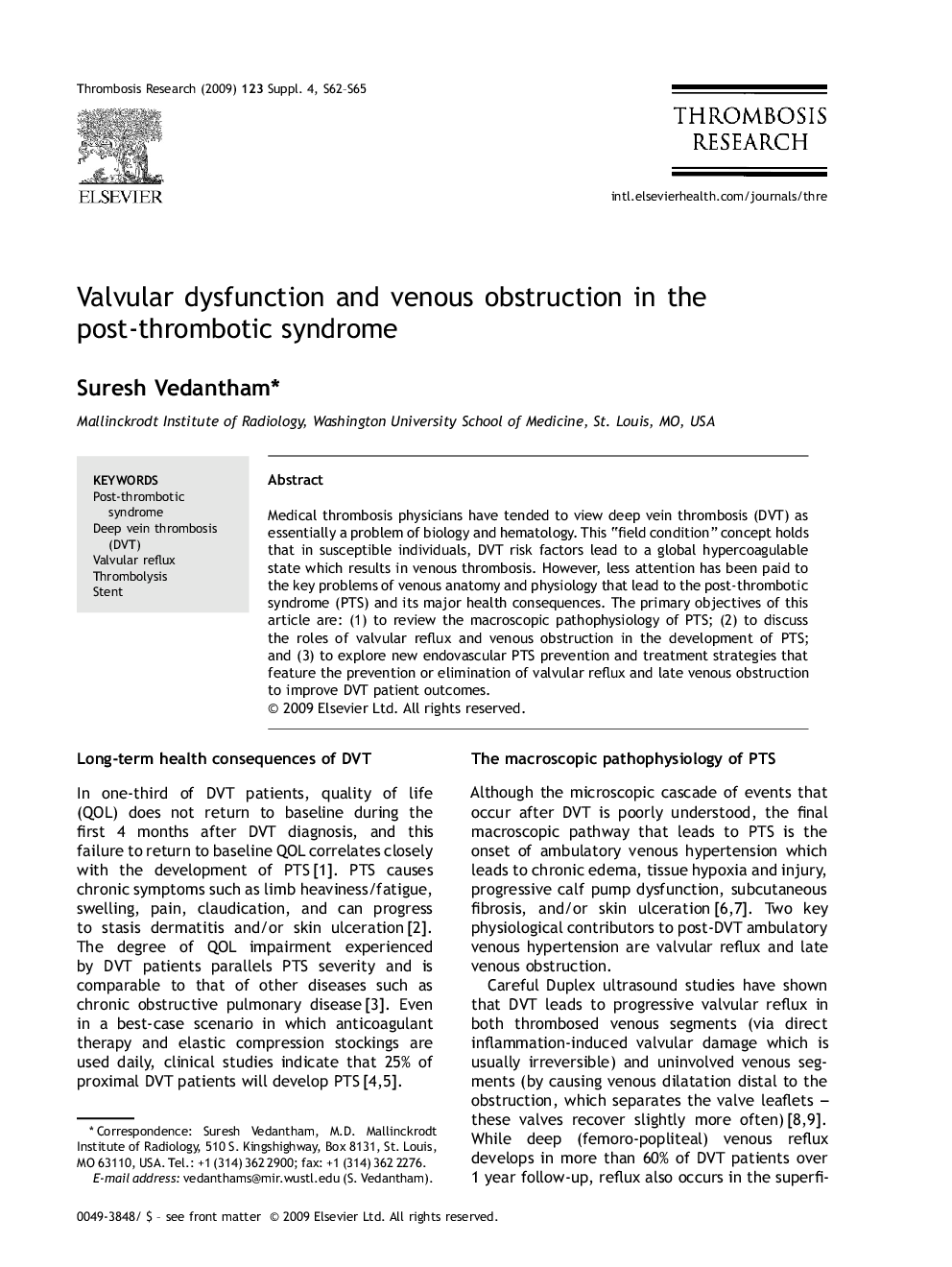| کد مقاله | کد نشریه | سال انتشار | مقاله انگلیسی | نسخه تمام متن |
|---|---|---|---|---|
| 3029343 | 1183063 | 2009 | 4 صفحه PDF | دانلود رایگان |

Medical thrombosis physicians have tended to view deep vein thrombosis (DVT) as essentially a problem of biology and hematology. This “field condition” concept holds that in susceptible individuals, DVT risk factors lead to a global hypercoagulable state which results in venous thrombosis. However, less attention has been paid to the key problems of venous anatomy and physiology that lead to the post-thrombotic syndrome (PTS) and its major health consequences. The primary objectives of this article are: (1) to review the macroscopic pathophysiology of PTS; (2) to discuss the roles of valvular reflux and venous obstruction in the development of PTS; and (3) to explore new endovascular PTS prevention and treatment strategies that feature the prevention or elimination of valvular reflux and late venous obstruction to improve DVT patient outcomes.
Journal: Thrombosis Research - Volume 123, Supplement 4, 2009, Pages S62-S65